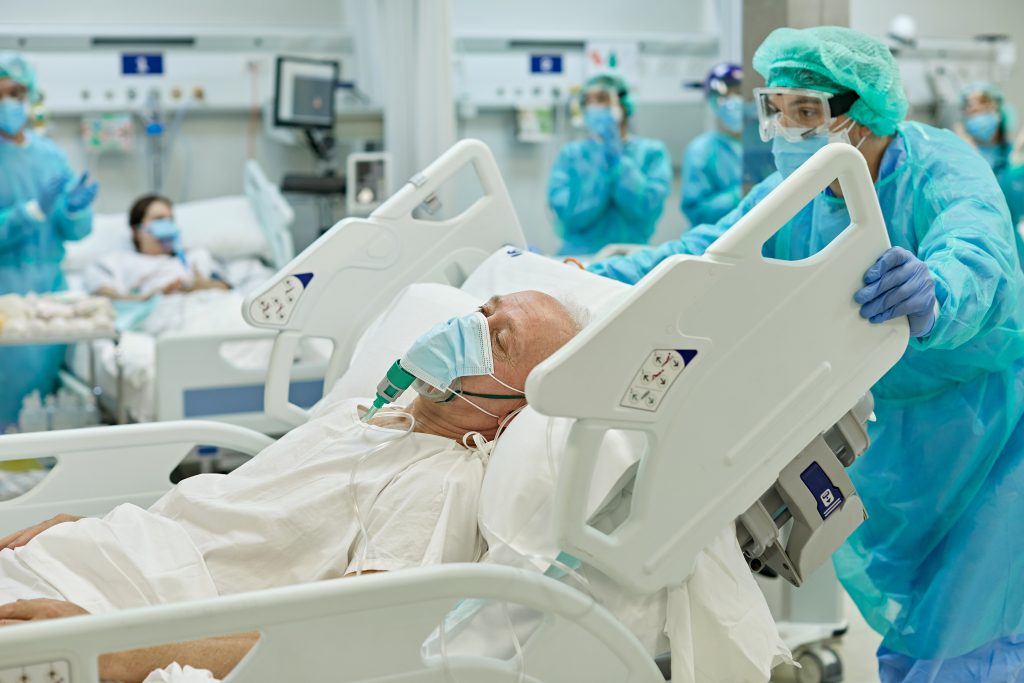
Dynamically steering bed allocation, along with a subsidy scheme at different phases of the COVID-19 pandemic, improved the effectiveness of patient care.
Throughout the COVID-19 pandemic, public hospitals around the world have faced significant challenges.
With a surging number of COVID-19 patients, hospital managers faced massive shortages of isolation beds (those with a ‘negative’ pressure environment protecting against infection). They were also under significant strain to take care of those with the virus, while trying to balance the needs of patients with other diseases such as cancer and leukaemia, along with emergency and elective surgery patients.
As the global pandemic rolls into its third year, hospital managers around the world are looking at how they can optimally allocate the limited amount of hospital beds between COVID-19 and non-COVID-19 patients (such as elective and emergency patients). It is a very critical problem.
Active bed allocation for public hospitals
Dr Xin Ma from the Department of Management recently published a study that considered two ways for public hospital managers to maximise the overall effectiveness of bed allocation for patients.
With co-authors Xue Zhao (Hong Kong Polytechnic University) and Pengfei Guo (City University, Hong Kong) and using data from Hong Kong, Dr Ma looked at the dynamic allocation of bed resources according to the evolution process, adopting different strategies for different phases of the COVID-19 pandemic.
Then they considered the execution of a subsidy scheme to move elective patients from the public to private hospitals.
“We developed a dynamic programming model to study the allocation of isolation and ordinary beds and the effect of the subsidy policy in serving three types of patients; COVID-19, emergency, and elective-care,” Dr Ma says.
In the model, the dynamic allocation between isolation and ordinary beds provides better utilisation of bed resources.
They say this can cut down at least 33.5 per cent of the total cost compared with the static policy (that is, keeping a fixed number of isolation beds).
Taking pressure off the public system
They also found that if the government subsidises elective patients and refers them to private hospitals, this is an efficient way to ease the overcrowded situation in public hospitals.
“Our results demonstrate that, by dynamically conducting bed allocation and subsidy scheme in different phases of the COVID-19 pandemic, the patient overall utility can be greatly improved,” Dr Ma says.
The outbreak of COVID-19 caused a surging number of COVID-19 patients that put enormous pressure on public hospitals where elective patients have often been put on the waiting list.
For example, millions of operations in the UK had been postponed by the UK’s National Health Service (NHS) to tackle the COVID-19 pandemic.
Reducing elective surgery is one of the essential ways hospital management use to optimise the limited medical capacity.
Waiting in the queue can cause a deterioration in patients’ health condition and a waiting cost is incurred for them. That’s why the waiting time for elective patients is also a key measure for public hospital managers.
Subsidising public patients to be moved to private hospitals
One effective way to reduce the waiting line is to subsidise elective patients and refer them to private hospitals for treatment.
Even without pandemic, the subsidy mechanism has been widely adopted to relieve the pressure of the public hospitals by many countries and areas such as England, Australia and Hong Kong.
In Hong Kong, COVID-19 patients are only treated by public hospitals appointed by the government.
Understandably, this means public hospital managers face a significant challenge.
On the one hand, with a surging number of COVID-19 patients, they are facing massive shortages of isolation beds which have a negative pressure environment.
The negative pressure helps to prevent airborne microorganisms from entering corridors, which can result in secondary infections.
Preventing the spread of infection
The problem is exacerbated because the inpatient hospital beds for the two types of patients are very different.
Since COVID-19 is very contagious, the average number of new infections generated by an infected patient – the ‘R0’, or reproduction number – ranged from 1.4 to 6.5.
This means each COVID patient will affect between one to six healthy people in the community.
To avoid cross-infection in the hospital, the COVID-19 patients must be provided with isolation beds. In contrast, non-COVID 19 patients only need ordinary beds.
Two types of beds (isolation and ordinary beds) need to be separately prepared to satisfy different demands from COVID-19 and non-COVID-19 patients.
“The two types of beds can be transformed into each other, after taking certain steps to modify them. We considered the bed reservation issue on two types of beds and also considered the transformation possibilities between them,” Dr Ma says.
The researchers conducted some numerical experiments to compare the effects of the dynamic allocation policy with that of a static policy (namely, a policy with a fixed number of isolation beds).
“We found that our dynamic allocation policy works best when facing a medium-alert pandemic situation and it can reduce the total cost by at least 33.5 per cent,” Dr Ma says.
“In a serious-alert situation, beds are all reserved for COVID-19 patients and hence there is little room left for dynamic adjustment of bed capacities. In a weak-alert situation, demand for isolation bed is small and hence dynamic allocation also does not work well.”
What this means for policymakers
The researchers believe these results will be helpful for hospital managers and policymakers.
Dr Ma explains that the dynamic allocation policy works best under conditions when a region facing a medium pandemic situation and it can reduce the cost of the static policy by at least 33.5 per cent.
“Our results also show that subsidising elective patients and referring them to private hospitals is an efficient way to ease the overcrowded situation in public hospitals,” he says.
“By comparing the experiment outcomes with and without a subsidy scheme, we show that a subsidy scheme can reduce the total cost by 38 per cent and shorten the queue length by 58 per cent.”


